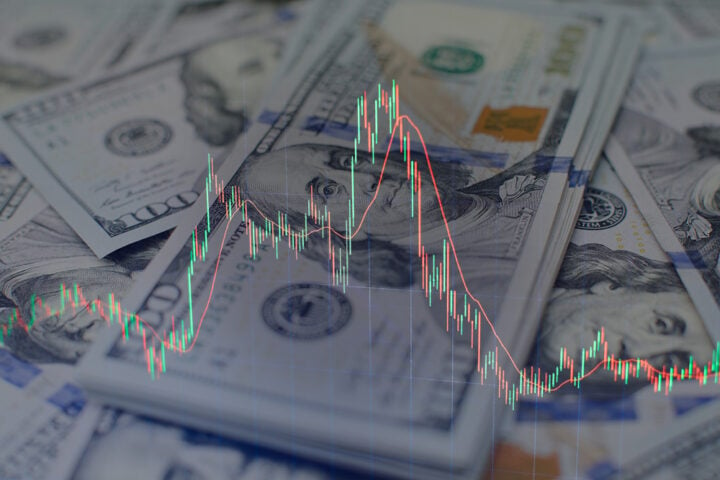Oil prices rose significantly on Thursday, climbing around 2%, as a mix of global events stirred the market. Fuel supply disruptions in the U.S. due to Hurricane Milton, escalating tensions in the Middle East, and signs of increased energy demand from both China and the United States have contributed to this price hike. The market is grappling with uncertainties, preparing for potential supply shortages and shifts in global demand that could impact energy prices in the coming weeks.
Hurricane Milton Disrupts Fuel Supply in Florida
In the U.S., Hurricane Milton has caused significant turmoil in the fuel market, especially across Florida. As the hurricane swept through the state, it closed several fuel terminals and disrupted fuel delivery networks, including tanker truck delays and pipeline slowdowns. With over 3.4 million homes and businesses experiencing power outages and about 25% of Florida’s fuel stations facing shortages, the state’s energy infrastructure has been heavily affected.
The immediate impacts of Hurricane Milton have led to a surge in gasoline prices across the region, adding pressure to the broader energy market. U.S. gasoline futures experienced a sharp increase, rising by 2.5% on Thursday as fears of extended supply issues linger. These disruptions are expected to affect fuel supply chains well into next week, keeping traders on high alert for any further instability.
Geopolitical Risks Add to Market Jitters
In addition to domestic supply concerns, geopolitical tensions in the Middle East have added another layer of uncertainty to global oil markets. On October 1, Iran launched over 180 missiles targeting Israel, a move that has stirred fears of a possible regional conflict. Although Israel has not yet responded to the attacks, the threat of military action looms, particularly around vital oil infrastructure.
Israel has warned that any military response would be “forceful and precise,” keeping market participants on edge about potential escalations that could affect key oil production and transportation routes. Diplomatic efforts are underway, with the United States engaging Israel on its response strategy. However, uncertainty remains about whether these discussions can prevent broader conflict.
Concerns have also spread to Gulf states, which have urged the U.S. to discourage Israel from targeting Iranian oil facilities. These countries fear heightened hostilities could lead to retaliatory strikes on their oil assets, further destabilizing an already volatile region.
Demand Outlook: China and U.S. Policies Offer Hope
Amid the challenges on the supply side, potential increases in energy demand from China and the U.S. are also influencing oil prices. China recently released a draft law aimed at bolstering its private sector, which is seen as an attempt to attract investors and stimulate economic activity. This initiative could boost energy consumption in the world’s second-largest oil importer, adding upward pressure on global oil prices.
In the U.S., there is growing anticipation that the Federal Reserve may adopt a more accommodative monetary policy. Recent data showing an increase in weekly jobless claims and a slowdown in inflation have fueled speculation that the Fed could cut interest rates in November. With the Fed already initiating rate cuts in September, further reductions in November and December could stimulate economic growth, potentially driving up energy demand as businesses and consumers increase spending.
As the largest oil producer and consumer, the U.S. plays a crucial role in the global energy market. Any signs of economic recovery could lead to a noticeable rise in domestic oil consumption, impacting global demand and supporting higher prices.
Navigating the Balance Between Supply and Demand
The current oil market faces a precarious balance between disrupted supply chains and the promise of demand growth. On one side, Hurricane Milton’s impact on Florida’s fuel distribution and the geopolitical tensions in the Middle East have created concerns about the stability of oil supplies. On the other, potential economic improvements in China and lower interest rates in the U.S. provide hope for increased energy consumption.
As a result, Brent crude futures closed at $78.20 per barrel, up $1.62 (2.1%), while U.S. West Texas Intermediate (WTI) crude settled at $74.72 per barrel, rising by $1.48 (2.0%). These increases reflect the market’s sensitivity to developments on both the supply and demand sides, with each new event capable of shifting the price trajectory.
Oil markets remain in a state of flux as traders keep a close eye on both supply challenges and demand signals. With disruptions caused by Hurricane Milton and ongoing tensions in the Middle East, alongside potential economic shifts in China and the U.S., the coming weeks could bring further volatility to energy prices. The market’s focus will remain on balancing these conflicting forces, as the outlook for global oil supply and demand continues to evolve.







